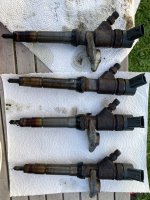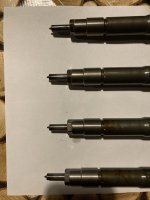Found some diagram
View attachment 449755
It won't be easy, because return line needs to be intercepted, that means getting both 11 (rail return line) and 18 (injector overflow) flows back to can and it's hard or impossible to get access to 11.
They join at 10 and go with fuel line 9 back to fuel tank. Perhaps it's possible to intercept the return at the fuel pump on the driver's side (at least for LHD) and feed it back to can.
If I manage to work it out I will post some pictures.
I see what you are trying to achieve, possibly another way would be to do it at the fuel tank using the flow and returns at the fuel pump in tank but disconnecting the fuel tank wiring plug if no where else easy to access.
My main concern regarding in effect running the vehicle on neat cleaner is at that concentration the lubricating properties that diesel injection system relies on to function will be almost zero as cleaning agent is going to be more detergent/petrol? than lubricating diesel so could cause excessive wear in expensive mechanical moving parts in the pump and injectors, also damage any rubber types seals designed for diesel.
On a slight different note many years ago we had a customer who had filled his diesel with petrol by accident and started a long journey, by the time it ground to a halt much of his injector system had to be replaced at great expense.
I know this was extreme and I have known others who only ran a few miles before realising and had their system drained and refilled with diesel and no further damage, so lucky.
I also had an accountant who filled his car with "petrol" at a main road fuel station, drove a 200 mile round trip , rang me in the morning complaining of poor performance and excessive smoke. I took one sniff and told him what a prat he was filling up with diesel! He was emphatic he hadn't and had the receipt to prove it, so he rang the fuel station to complain and the first words they said was, "how far did you get?", apparently they had cars breaking down everywhere due to a duff load of petrol that was largely actually diesel!



This was before all the modern technology of cats, dpf, egrs etc. so less to damage.
At the end of the day, your vehicle, your risk.

Though I would caution against it, as not everything online is 100% accurate or advisable.




